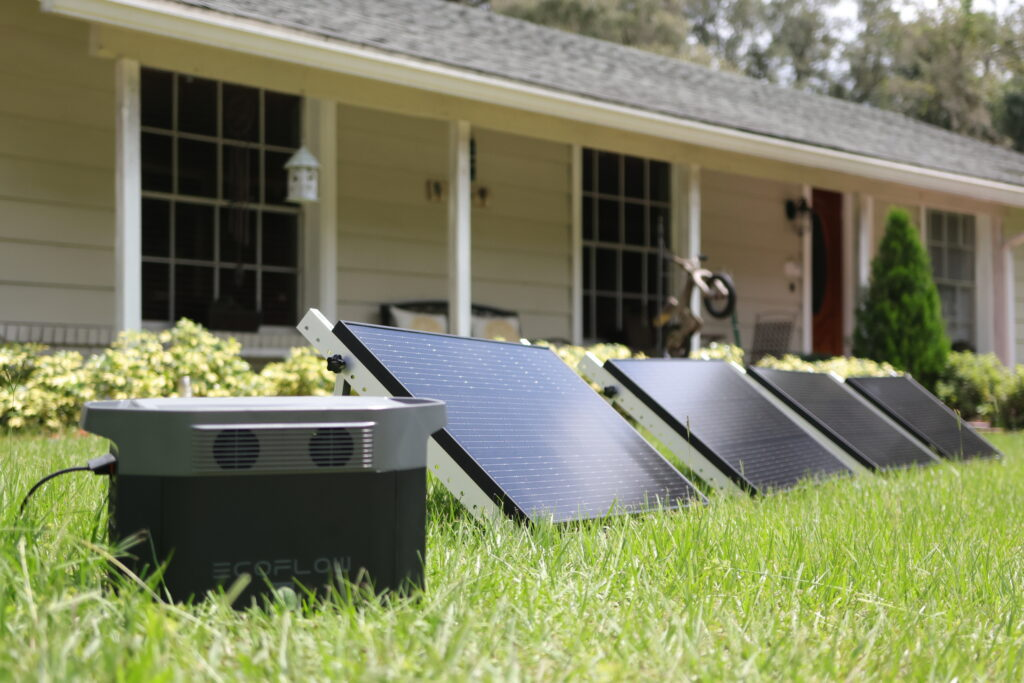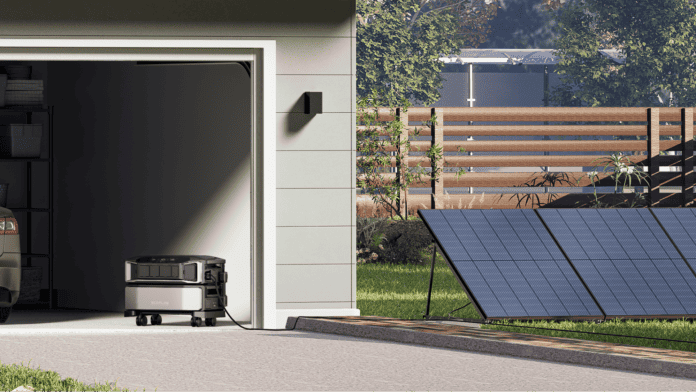How Much Does a 10kW Solar System Cost?
- What Is a 10kW Solar System?
- How Much Power Does a 10kW Solar System Produce?
- How Many Batteries Are Required for a 10kW Solar System?
- How Many Solar Panels Are Required for a 10kW Solar System?
- Can a 10kW Solar System Power a Whole House?
- How Much Does It Cost to Install a 10kW Solar System?
- Factors That Influence the Cost of a 10kW Solar System
- How Much Area Is Needed to Build a 10kW Solar System?
- Wrapping Up: Understanding Your 10 kW Solar System Potential
- FAQs about 10kW Solar Systems
Solar energy is becoming a popular choice for homeowners seeking to reduce electricity bills and environmental impact. Among various system sizes, the 10kW solar system stands out for its capacity to power larger homes or small businesses. Understanding the cost and components of such a system is essential before making an investment.
What Is a 10kW Solar System?
A 10 kW solar system is designed to produce 10 kilowatts of power under optimal conditions. This system typically includes:
- Solar Panels: Capture sunlight and convert it into electricity.
- Inverter: Converts the electricity from direct current (DC) to alternating current (AC) for home use.
- Mounting System: Secures the panels to the roof or ground.
- Wiring and Electrical Components: Connect and manage the flow of electricity.
- Monitoring System: Tracks energy production and system performance.
The setup is quite suitable for households with higher energy consumption or for small commercial establishments.
How Much Power Does a 10kW Solar System Produce?
On average, a 10kW solar system will produce about 30 to 50 kilowatt-hours (kWh) per day. That is about 1,000 to 1,500 kWh per month, or about 12,000 to 18,000 kWh per year.
Here’s what affects the production:
- Location: In sunny states like Arizona or California, your system will produce more power than in cloudy or northern places.
- Seasons: During summer, days are longer and the sun is stronger, so the system will produce more electricity. In winter, days are shorter, and the panels make less.
- Panel Angle: Panels work best when they face the sun at the right angle. A roof with the wrong slope or panels facing the wrong direction will produce less energy.
- Shade: If trees, buildings, or other panels block sunlight, the system will make less power.
- Dust and dirt on panels can reduce energy output.


How Many Batteries Are Required for a 10kW Solar System?
Batteries store extra energy from the solar system. They help you use power when the sun isn’t shining. The number of batteries you need depends on how much energy you want to store. For a 10 kW system, the battery setup depends on the size of the batteries and your storage goals. Here’s a simple guide:
- Small backup (for essential devices): About 25 kilowatt-hours (kWh) of storage. This needs around 6 to 8 large batteries.
- Full backup (for all home energy use): About 50 kWh of storage. This needs around 12 to 16 large batteries.
Battery size can vary. Many modern batteries can store around 5 kWh each, so you’ll need several to reach your storage goal.
Also, larger battery systems cost more but give more energy independence. Smaller systems cost less but may not cover all needs during long blackouts.
How Many Solar Panels Are Required for a 10kW Solar System?
The total number of solar panels you need depends on the size of each panel:
- 400-watt panels: You need 25 panels (10,000 ÷ 400 = 25).
- 350-watt panels: You need about 29 panels (10,000 ÷ 350 ≈ 28.6).
- 300-watt panels: You need about 34 panels (10,000 ÷ 300 ≈ 33.3).
Bigger panels mean fewer panels are needed. Fewer panels can save roof space and reduce the cost of mounting. However, high-wattage panels may cost more each, so there’s a balance.
Can a 10kW Solar System Power a Whole House?
Yes, a 10kW solar system can power an entire house, especially if the household’s average daily consumption is within the system’s production range. The average U.S. household consumes about 30 kWh per day, which a 10kW system can cover. However, homes with higher energy needs, such as those with electric heating or pools, may require additional capacity or energy efficiency measures.
How Much Does It Cost to Install a 10kW Solar System?
On average, the cost ranges from $25,000 to $35,000 before incentives. After applying the federal solar tax credit, which offers a 30% reduction, the net cost falls between $17,500 and $24,500.
Factors That Influence the Cost of a 10kW Solar System
The total cost of a 10kW solar system can vary significantly based on several key components and considerations:
| Factor | Cost Range | Details |
| ● Solar Panels | $7,500 – $20,000 | 45–60% of total cost; price varies with type, efficiency, and brand; higher efficiency gives better long-term savings. |
| ● Inverters | $2,250 – $5,000 | Converts DC to AC; 15–25% of total cost; options include string, micro, and hybrid inverters. |
| ● Mounting and Racking | $1,000 – $3,000 | Secures panels to roof/ground; cost depends on roof type and installation complexity. |
| ● Electrical Components and Wiring | $500 – $2,000 | Includes wiring, connectors, and junction boxes; essential for safe and efficient operation. |
| ● Labor and Installation | $6,000 – $10,000 | Costs vary with location and complexity; includes physical setup and electrical work. |
| ● Permits and Inspection Fees | $500 – $2,000 | Local fees for permits and inspections; vary by region and municipality. |
| ● Battery Storage (Optional) | $10,000 – $20,000 | Adds energy backup; price depends on capacity and battery type chosen. |
| ● Incentives and Rebates | 30% federal tax credit + local/state incentives | Reduces total cost; specific incentives vary by location. |
How Much Area Is Needed to Build a 10kW Solar System?
The size of the system depends on the panels’ wattage and efficiency.
- Using 400W panels: Each panel needs about 18–20 square feet. For 25 panels, the total area needed is around 450 to 500 square feet (about 42–46 square meters).
- Using 300W panels: Each panel needs about 20–22 square feet. For 34 panels, the total area is around 680 to 750 square feet (about 63–70 square meters).
Panels need to be spaced out a bit for airflow and maintenance. The total space should be free of shade from trees, chimneys, or nearby buildings.
If you use more efficient panels, you can reduce the total area. For example, high-efficiency panels may allow a 10 kW system to fit on a smaller roof. Ground-mounted systems need clear, open land.


Wrapping Up: Understanding Your 10 kW Solar System Potential
A 10 kW solar system offers a powerful way to produce clean energy for homes or businesses. It can make between 30 to 50 kWh per day, enough for most homes. The system cost is about $25,000 to $35,000, or around $17,500 to $24,500 after tax credits. Factors like location, roof type, equipment, and battery storage can change the total price. The system needs 450–750 square feet of space, depending on the type of panels. With proper design and installation, it can power a whole house and save money for years.
FAQs about 10kW Solar Systems
Q1: How long does it take to break even on a 10kW solar system investment?
The break-even point, or payback period, is usually between 6 to 10 years in the U.S., depending on local electricity rates, sunlight availability, and incentives. In areas with high electricity costs and lots of sun, payback can be closer to 6 years. After this period, most of the electricity produced is essentially free.
Q2: How does adding a smart monitoring system impact the cost and performance?
A smart monitoring system typically adds about $300 to $800 to the total cost. However, it helps track energy production and usage, detect system problems early, and optimize performance. Over time, it can help save more money by identifying inefficiencies and ensuring panels work at their best.
Q3: Do solar panels on a 10kW system lose efficiency over time?
Yes. Solar panels degrade slowly, losing about 0.5% to 1% efficiency per year. After 25 years, most panels still produce about 80% of their original capacity. This gradual loss is normal and factored into solar system planning. High-quality panels tend to degrade more slowly.
Q4: Can a 10kW solar system increase my home’s value?
Yes. Studies show that homes with solar systems sell for about 4% to 6% more than similar homes without solar. Buyers are attracted by lower energy bills and the idea of owning a home with renewable energy. This added value depends on the local housing market and system conditions.
Q5: Is there a portable 10kW solar system?
No, a fully portable 10kW solar system does not exist because such systems are too large to move easily. A system with 10kW output needs many large panels and a high-capacity inverter, which makes it too big for portability.
However, if you’re looking for a high-capacity solar power solution that’s still relatively portable, the EcoFlow DELTA Pro Ultra Solar Generator is a great choice. It offers:
Up to 21.6 kW output with up to 3 inverters and 15 batteries.
Flexible solar input options (from 5.6kW to 16.8kW) with support for multiple panels.
Compact, modular design, which makes it easier to transport than a fixed system.
An LFP battery with online UPS and 0-ms transfer time, ensuring uninterrupted power for home or critical devices.
IP68-rated 400W rigid and 125W/400W portable solar panels that allow for adjustable angles and efficient charging in different setups.